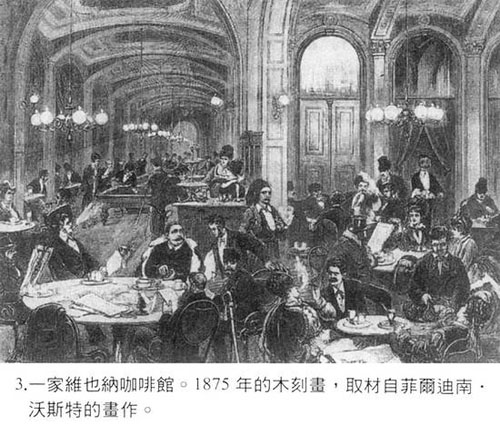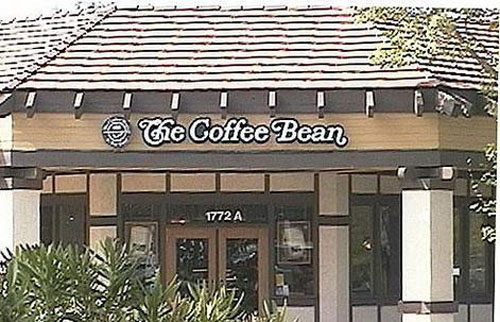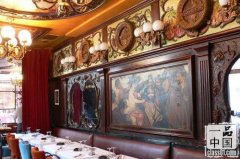Coffee History Cafe History

At the beginning of the 17th century, Constantinople was the capital of the most powerful empire in Europe. When the British noticed the cafes here, they were already very popular in the Ottoman Empire.
The construction of a magnificent cafe became the first important move of the Ottoman rulers after conquering a city to demonstrate the civilization of their rule. At that time, some British travelers and businessmen thought that Islam banned alcohol, so the Turks used coffee instead of wine. They did not have a bistro like London or the Ayre Brewery in England, but they had cafes.
Constantine
According to the 1635 records of the Turkish historian Pechevi Ibrahim I, it was not until 1554, during the reign of Suleiman I, that the coffee shop first appeared, and the two Syrians each opened a coffee shop in Constantinople. It is located near the noisy market near the port and the Passa mosque. The museum is equipped with clean mats and blankets, and the charge is very cheap.
The Turks soon fell in love with the cafe, which they regarded as the best place to rest, entertain and make friends. Later, even palace officials, senior civil and military officials and upper-class members of the public went in and out of the cafe.
The British have noticed that customers here are more likely to sit on stools on both sides of the street outside the cafe, talking like the British at Al Brewery, and if there is any news, talk about it on this occasion. The etiquette habit of drinking coffee reinforces egalitarianism. The great men of the city, such as the officials of the palace, the merchants and the Guards, not only met with ordinary people here, but they also got along with ordinary people on an equal footing, because all people got coffee in turn. Everyone sat down according to the order of arrival, not according to the usual Ottoman hierarchy.
In the 1650s, the first Christian cafe opened in London. In the mid-17th century, cafes became synonymous with business and news in London, and for a long time became a natural home for businessmen, scientific researchers and intellectuals, providing a unique place for business and politics with overlapping interests. Similar sites were quickly replicated in other towns.
Oxford may be the second place to have a cafe after London. In 1655 or 1656, pharmacist Arthur Tiad opened a shop on Hay Street facing the Church of all Souls. As a pharmacist, he is well suited to provide entertainment and guidance to these naturalists, and one of the rooms in his shop is used as a meeting place for a chemistry club, which is an important forerunner of the Royal Society.
But Tead's cafe soon no longer serves this small group of people, but begins to attract a wider range of customers from universities and cities. By the time the dynasty was restored, Oxford already had several cafes. In 1665, when Parliament moved to Oxford to escape the plague, a house in the seminary was opened up as a cafe to serve MPs. By the late 1660s, cafes had taken root in England. Almost every British city has at least one cafe where people gather to talk about news and do business.
Cafes have also spread overseas, especially in cities with a considerable number of British businessmen, typically run by people of Mediterranean origin. For British businessmen, one of the most profitable trade routes is across the Atlantic to the British North American colony.
One of the earliest cafes outside England was opened by British businessmen in Boston, Massachusetts Bay, in 1670-earlier than cafes in Paris, Venice or Vienna. Boston was then the largest British colonial city in North America.
In September 1690, Benjamin Harris, an ambitious Puritan bookseller, persuaded the Boston town council to issue him a permit to open a shop on King Street, near the downtown trading house, to sell coffee. He is familiar with London cafes and knows the power of coffee and publishing.
In North America, he continued to open bookstores, retailing books imported from London, publishing calendars and other things popular in Boston, all of which were sold directly on the counter of the Cafe London. In 1690, he began publishing a monthly report-- the first monthly report in the American colonies-- called "Public events," but was soon banned by the municipality without permission. In 1695, a competitor appeared-the cafe of Gartrig, Bartov's brother-in-law.
Bartoff was an influential theologian's publisher with a bookstore on the corner of Washington Street and Kurt Street in downtown Boston. Gartrig opened a cafe in the bookstore until 1711. A fire destroyed the whole area.
By combining coffee with news, coffee shopkeepers such as Boston, who run part-time bookstores, have successfully replicated the typical urban culture of London. As a result, since the 1670s, cafes have become the core symbol of Boston's public administration, social life and prosperous business.
The "British headquarters" in North America
It was not until 1696 that New York had its first coffee shop. John Hachen, an English immigrant, opened his own King's arm Cafe on Broadway.
Hachen's cafe is modelled on the London Cafe model he knows. There is a large room upstairs, lined with tables covered with green tablecloths. Through the door, you can get to the balcony and enjoy the beautiful river view and wharf, so that the merchants can see the ship arriving at the port early. The new cafe immediately became an "informal headquarters for New York Britons", providing a home for "municipal and non-local officials, businessmen and port staff".
The opening of the cafe shows that the number of Britons is growing under mayor Benjamin Fletcher, who is trying to eliminate the influence of Dutch Calvinist settlers who are rebellious and make up the majority of the city's population. Fletcher not only promoted the cafe and held various celebrations for the Royal Festival among his subordinates, but also invited a bookseller from Philadelphia to settle in the city to support him in publishing a newspaper. With the emergence of the first cafe and the first newspaper, New York began to look like a regular British colony.
By 1701, the new mayor could boast that New York was "the fastest growing city in North America". In the joyous atmosphere of the King's arm Cafe, people from the "British Party" get together, sometimes talking about business and social rumors, and more often about news and politics. Over the next decade, New York City became more British, and Hachen's cafe occupied a central position in civic politics, hosting civilian committee meetings and colonial council meetings.
Any colonial city that hopes to grow quickly will need a cafe. Philadelphia opened one in 1703, owned by the postmaster, whose cafe was also an exchange for merchants. Cafes in the British colonies of North America attract respectable customers.

The Paris Cafe is quite like a bistro.
The early cafes in Paris were typically run by poor Mediterranean coffee merchants, often by foreigners. As La Roque, the son of a Marseilles businessman, concluded, "Gentlemen and fashionistas are ashamed to go to such public places, where people smoke and drink smelly beer, and their coffee is not the best. Customers can't enjoy the most thoughtful service.
A significant change in cafes in Paris occurred in 1676. At that time, an Italian Procopia opened a shop at the annual Saint-Germain bazaar. He "sets off" the cafe with "tapestries, large mirrors, pictures, marble tables, many candles and other decorations" to attract more prestigious customers.
His success in the bazaar led him to replicate a more lasting storefront on Duhron Street. After 1686, Procopia Cafe in St. Germain de Forsyte was converted into a restaurant and introduced himself as the oldest cafe in the world. "with a better decorated room," Laroque commented, "there are gentlemen who come here for coffee and decent friends, and scholars and the most serious people do not avoid these gatherings."
France has strict license control over the drinks sold in various stores. Although the right to sell wine is limited to members of the wine guild, beer can be sold in many industries. The emergence of cafes in the early 1670s coincided with the advent of new wines, including brandy and fruit wine, which, like coffee, were used more as medicine.
In 1673, the king allowed the newly formed lemon company to sell coffee and all kinds of brandy. Three years later, the lemon merchants formed a guild with the winemakers and brandy merchants. Selling brandy is a lucrative business, and a stable market can be found quickly, forcing early cafe operators to move upmarket. This occasional shift in business rules has permanently changed the sociality of Parisian cafes.
From the beginning, the main commodity sold in French cafes was alcoholic beverages. Although coffee is nominally different from its competitors (bistro, bistro, cabaret), it is basically just a name. As many visitors to Paris will find, the cafe in Paris is not really a pure coffee-house.) .
When cafes spread all over Europe, their form and nature have changed in different social environments. In Britain, cafes are still dominated by men, focusing on giving people access to news, reading and writing, doing business and sniffing out rumors and news. Such cafes are especially suitable for all men in business, as well as priests, courtiers and critics. Although the London model was successful in North America, it did not become the mainstream model in Europe.
The French-style cafe is a mixture of cafes and taverns that attract a lot of established customers and are very influential in continental Europe, especially in Italy.
"Post Office" and Battle reward
In Rome, the most famous is the Graco Cafe, which opened in 1750. Traveling to continental Europe is an essential education for British aristocratic children, while Rome is the preferred destination. For the sake of art, a group of northern artists from Britain, Germany and Scandinavia work in this city. These painters, sculptors and antiquities researchers regard Greco Cafe as their favorite place to go.
The cafe is not big, and even in the 19th century there were only three small rooms. Around 1752, after a dispute between a group of British artists and their German counterparts, they moved to a cafe in Spain Square a few hundred meters away and turned it into a British cafe. In 1765, James Boswell made it his own post office and told his friends to send the letter to the Cafe of England during his stay in Rome.
Thomas Jones, a young Welsh painter, recorded that in December 1776, on his first day in Rome, he was taken there, where he was happy to find "an old friend of London". The cafe is opened in a dirty vaulted room, but the decoration is the most exciting modernist style, in Rome's cold winter, damp accommodation makes Jones very inappropriate, the only comfort is to "run to the English cafe."
In Vienna, the birth of cafes has long been romanticized by the story of the Polish Franz George Karzesky. In 1683, Vienna was besieged by well-equipped Ottoman troops. After months of shelling, just as the fortifications seemed to collapse, the Polish Prince led reinforcements to lift the siege, the Ottoman army was wiped out, and all baggage and supplies were captured.
The officers in Vienna were amazed by the large amount of war materials and military supplies, especially the large amount of food supplies that the hungry city urgently needed. Karzesky had spied on the enemy several times during the battle and had experienced a lot of danger. in order to reward his bravery, Karzesky was given a few bags of Ottoman coffee, which no one had ever seen before, and no one knew how to eat it.
Karzesky had so much coffee that he peddled the drink in the city and made the residents of the city like it. However, the first cafe opened in 1685 and was owned by an Armenian in the city, who applied for and received the only concession to make and sell this "oriental drink" in Vienna for 20 years.
Important Notice :
前街咖啡 FrontStreet Coffee has moved to new addredd:
FrontStreet Coffee Address: 315,Donghua East Road,GuangZhou
Tel:020 38364473
- Prev

On Coffee Culture in Coffee History
Coffee is a kind of culture, a kind of global culture, but also a kind of regional culture, which can be said to be a kind of global culture with regional differences. So different countries, combined with their different cultural backgrounds, thus formed different coffee cultures. Arab coffee culture as the first region in the world to drink and produce coffee, Arab coffee culture is like its coffee.
- Next

Le Procope in Paris, the Witness of French Literature
What made Prokop Cafe famous at that time was its location, opposite the famous Laoxi Theatre in Paris, so as soon as it opened, Prokop became a beverage place for the Comedy Theatre: actors, playwrights, and audiences, they all like to come here for a drink, comment on the play, chat and party before and after the performance or during the interval. It's on the site of a high-end salon bathroom.
Related
- How did the Salvadoran coffee industry develop in Central America?
- What exactly does the golden cup extraction of coffee mean?
- The Origin of Coffee flower
- [2023 Starbucks World Earth Day] there are more meaningful things besides free Starbucks coffee!
- What kind of coffee is there in Spain? 9 Flavors of Spanish Coffee
- Aromatic African coffee| Kenya's coffee culture and historical production area
- Liberica Coffee Bean knowledge: the characteristics of Liberian Coffee beans of the three original species of Coffee beans
- The origin and formula of Spanish latte introduces the taste characteristics of Bombon coffee in Valencia, Spain.
- How to adjust the solution of over-extracted coffee
- What is the tasting period of coffee beans? What is the period of coffee and beans? How should coffee wake up and raise beans?

